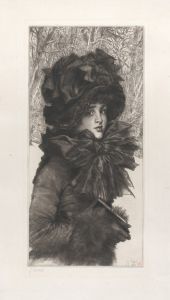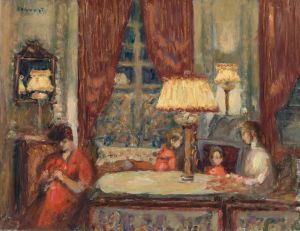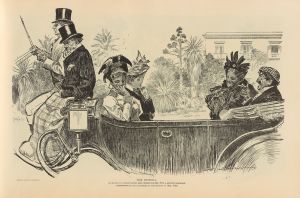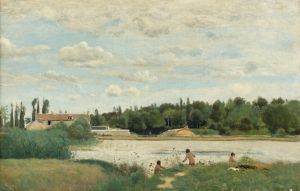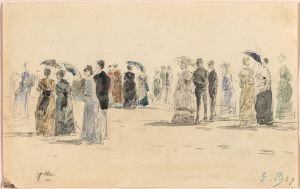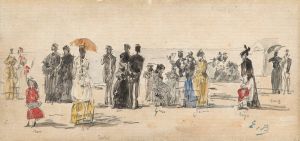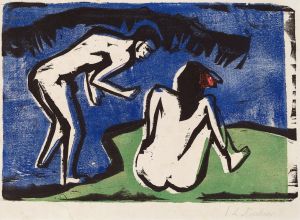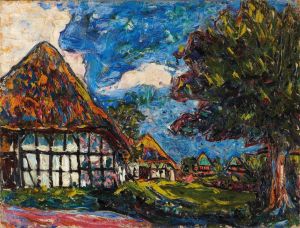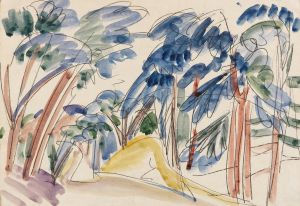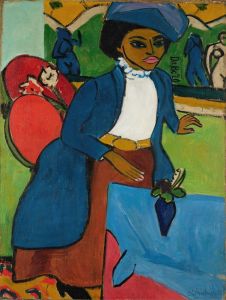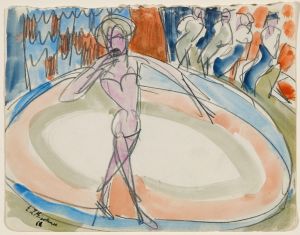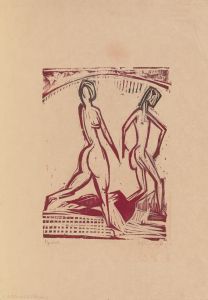
Moritzburger Badende im Gestrüpp
A hand-painted replica of Ernst Ludwig Kirchner’s masterpiece Moritzburger Badende im Gestrüpp, meticulously crafted by professional artists to capture the true essence of the original. Each piece is created with museum-quality canvas and rare mineral pigments, carefully painted by experienced artists with delicate brushstrokes and rich, layered colors to perfectly recreate the texture of the original artwork. Unlike machine-printed reproductions, this hand-painted version brings the painting to life, infused with the artist’s emotions and skill in every stroke. Whether for personal collection or home decoration, it instantly elevates the artistic atmosphere of any space.
"Moritzburger Badende im Gestrüpp" (translated as "Bathers in the Reeds at Moritzburg") is a painting by the German expressionist artist Ernst Ludwig Kirchner. Created in 1910, this work is a notable example of Kirchner's vibrant and dynamic style, which is characterized by bold colors, vigorous brushstrokes, and a focus on the human figure in natural settings.
Ernst Ludwig Kirchner was a founding member of the artist group Die Brücke (The Bridge), which played a crucial role in the development of Expressionism in the early 20th century. Die Brücke was formed in Dresden in 1905 by Kirchner along with Fritz Bleyl, Erich Heckel, and Karl Schmidt-Rottluff. The group sought to create a new artistic language that broke away from traditional academic standards and embraced a more direct and emotional approach to art.
"Moritzburger Badende im Gestrüpp" reflects the group's interest in depicting the human form in a raw and unidealized manner. The painting shows a group of nude bathers amidst a dense thicket of reeds, capturing a moment of leisure and connection with nature. The setting of Moritzburg, a small town near Dresden, was a favorite retreat for the members of Die Brücke, who often visited the area to paint en plein air and to seek inspiration from the natural landscape.
The composition of the painting is dynamic, with the figures arranged in a way that leads the viewer's eye through the scene. Kirchner's use of color is particularly striking; he employs a palette of vivid greens, blues, and yellows to convey the lushness of the natural environment and the vitality of the human figures. The brushwork is energetic and expressive, contributing to the overall sense of movement and spontaneity.
Kirchner's work during this period was heavily influenced by non-Western art forms, particularly African and Oceanic art, which he and his contemporaries admired for their perceived authenticity and emotional power. This influence is evident in the simplified and exaggerated forms of the figures in "Moritzburger Badende im Gestrüpp," which convey a sense of primal energy and directness.
The painting is also significant for its exploration of themes related to the body, nature, and freedom. By depicting nude figures in a natural setting, Kirchner challenges conventional notions of propriety and celebrates a more liberated and harmonious relationship between humans and their environment. This theme of liberation is central to the ethos of Die Brücke, which sought to bridge the gap between the individual and the natural world through art.
"Moritzburger Badende im Gestrüpp" is housed in the collection of the Brücke-Museum in Berlin, which is dedicated to the works of the Die Brücke artists. The museum holds an extensive collection of Kirchner's works, providing valuable insights into his artistic development and the broader context of German Expressionism.
Overall, "Moritzburger Badende im Gestrüpp" is a quintessential example of Kirchner's early work and the innovative spirit of Die Brücke. It captures the essence of the group's artistic vision and their quest to create a new, expressive language that resonated with the emotional and social currents of their time.





